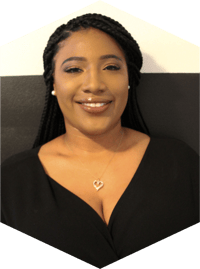DEI.
We’ve all seen these three letters in offices, job descriptions, and across company websites.
But what exactly does it mean? And why are more and more businesses focusing on implementing meaningful DEI initiatives as part of their overall company culture and employee experience?
In this article, we’re going to unpack the magnitude of these three letters and the importance of DEI in the workplace. To help us, we’ve asked six industry leaders from Hunt Club’s Expert Community to provide their best advice on building authentic DEI practices and diverse workforces.
We’ll also provide eight powerful ways your business can build a work environment where employees feel valued, seen, and able to do their very best work.
DEI Insights and Helpful Tips From Hunt Club Experts
Hunt Club Experts make up a powerful community of leaders, innovators, investors, and high performers who have navigated the nuances of building the best teams across a variety of organizations.
With years of collective experience, they have built incredible relationships with some of the top minds in their industries. Through these connections, Hunt Club Experts introduce hard-to-reach talent to leading organizations, positively impacting companies and individuals alike.
We asked six of these Experts for their best advice to employers on how to improve diversity in the workplace.
First, we’ll cover what DEI in the workplace is, then learn what our Experts have to say about building authentic DEI strategies.
What Is DEI in the Workplace?
DEI stands for Diversity, Equity, and Inclusion. It’s an umbrella term that encompasses various business initiatives, policies, programs, and strategies used to build and maintain a safe and inclusive environment that accommodates the many unique needs of its employees.
DEI in the workplace ensures every employee’s needs are not only met, but respected, embraced, and celebrated. It’s a critical tenet that actively accommodates and holds space for a person’s:
- National origin
- Ethnicity
- Sexual orientation
- Gender identity
- Socioeconomic status
- Marital status
- Veteran status
- Age
- Religion
- Physical ability
 1. Advice From Isabelle Plante, Former CMO @ Embark Veterinary, Mentor & Speaker @ MassChallenge
1. Advice From Isabelle Plante, Former CMO @ Embark Veterinary, Mentor & Speaker @ MassChallenge
If you are committed to doing the work, clearly communicate with your company what resources you’re investing in, where you are on the journey, and what your expectations of success look like.
If this is new to you and are unsure where to start, get feedback from your existing team to understand your current culture and where you can improve inclusivity and belonging. Really listen and act on the feedback. Even really strong cultures have opportunities for improvement. Connect with local experts, preferably BIPOC who can speak to lived work experiences and really listen and learn from their experience.
Candidates from diverse backgrounds are unlikely to join a company that doesn’t already have a strong culture of inclusivity, so focus on building that strong culture first and then you can expand your efforts to improve the diversity of your human capital by adding diversity to your Board, hiring pipeline, and vendors.
 2. Advice From Stela Lupushor, Author & Chief-Reframer @ Reframe.Work Inc.
2. Advice From Stela Lupushor, Author & Chief-Reframer @ Reframe.Work Inc.
I recommend that employers examine all the HR processes that impact the worker’s experience and understand the impacts that poorly-designed processes or inadequately-executed policies can have on employees.
To help your team audit your processes and how they are impacting your current and future employees, ask your team:
- When hiring new people, are we intentionally inviting and selecting candidates from underprivileged or under-tapped groups?
- When it comes to developing and mentoring talent, who are we investing in?
Connect With Stela
 3. Advice From Farzona Pulatova, Sr. Director of Engineering
3. Advice From Farzona Pulatova, Sr. Director of Engineering
You can’t improve what you don’t measure. As an employer, you have to audit the current practices you have in place, assess employee ratios by gender and underrepresented groups, and then set specific goals around improving these ratios.
Attracting diverse talent requires conscious effort and intentional focus. A good place to start is by taking a look at your job descriptions and making sure they’re written with an inclusive tone and language.
Attracting diverse talent is only one side of the equation. Workplaces can sometimes overlook the other side of the equation, i.e., retention. Keep in mind that establishing thoughtful practices around retaining this talent is just as important as recruiting them.
 4. Advice From Anil Harjani, SVP of Revenue @ Hireology
4. Advice From Anil Harjani, SVP of Revenue @ Hireology
Take a look at your recruitment marketing efforts. Are you focusing on the same 1–2 channels for sourcing talent? And are your job descriptions and other recruitment marketing content outdated when it comes to inclusive language? If so, you might be limiting your reach to more diverse audiences.
Look into expanding your sourcing channels to include job fairs or partnerships with local colleges or organizations to ensure you're reaching great talent of all backgrounds. And take some time to revamp your job descriptions to include inclusive language, a description of your DEI policy, and an equal opportunity statement.
 5. Advice From Shaykara Webster, Head of People @ Livepeer
5. Advice From Shaykara Webster, Head of People @ Livepeer
My biggest advice to employers on improving diversity in the workplace is to design and implement diversity practices and processes at every stage of the employee life cycle.
After you’ve examined how your company has approached DEI, find ways to integrate new practices that help with everything from recruiting and talent acquisition to onboarding to compensation management, and more.
For example, there are applicant tracking systems that allow you to implement DEI metrics to ensure that your pipeline has a fair diversity representation at every stage of the hiring process. Additionally, your team can utilize software that can conceal candidate names and pictures so that hiring managers can review talent profiles without exercising unconscious bias, and so much more.
It takes intentionality and committed professionals who truly care about DEI to improve it in the workspace.
 6. Advice From Leanne Loveday-Smith, Chief People Officer @ Earnest
6. Advice From Leanne Loveday-Smith, Chief People Officer @ Earnest
If you can only do one thing, I highly recommend an approach we undertake at Earnest, which is to expand your search for talent nationally. This helps us tap into diverse talent, regardless of geographical location.
If that is not an option, I’d encourage you to define what diversity means to your team and why it is important. With this as a north star, you can identify where you need to enact change, partner with internal champions, and execute on and track progress towards specific DEI goals.
8 More Powerful DEI Initiatives Employers Can Start Today
1. Revise Your Job Descriptions To Speak to Diverse Groups and Address Any Disparities
When it comes to attracting top talent, job descriptions play a vital role in who will consider and apply for the job. Review your job descriptions and look for any points that create a gap between candidates and their desire to apply.
For organizations that are looking to grow a diverse team, you might consider including fewer male-coded words to attract a wider talent pool.
A study from the Journal of Personality and Social Psychology found that organizations that employ gender-coded language in their job descriptions — for example, words such as “competitive” and “dominant” — can lead to a more homogenous, male-dominated group of applicants.
Consider updating job descriptions with words rooted in neutrality to invite other, underrepresented groups to apply. Include words like:
- Collaborative
- Dependable
- Responsible
- Trustworthy
Ask yourself if you are speaking to a specific demographic unconsciously. If you find that you are, how can you update your job descriptions to speak to everyone? Your team may also consider partnering with a DEIB expert to help revise your job descriptions.
2. Review Your Benefits and Compensation Packages
When it comes to benefits and compensation, transparency is the best policy. Candidates often come in with industry knowledge of the average benefits and compensation rates people receive. To ensure you offer competitive compensation that does not have pay inequities based on gender diversity, age, religion, or other backgrounds, have your human resources and leadership teams:
- Review your competitors’ benefits packages.
- Analyze compensation, perks, and benefits of companies focused on diversity.
- Talk to people from different socioeconomic backgrounds in your network about current market compensation rates and what they’d expect from their employer.
3. Develop DEI Coaching/Mentorship Programs
One of the best investments your team can make is taking the time to mentor your employees in DEI. Beyond developing stronger relationships with one another, specifically mentoring in DEI helps all employees involved understand their unique part in creating a diverse workforce and provides them with a sense of belonging or a partner to share their experiences with.
Mentoring can also help employees in the minority grow their network through introductions, fellowship, and guidance. One way to do this is to pair up an employee with a member of your executive team to help broaden networks and deepen DEI education amongst both parties.
4. Invest in Employee Resource Groups (ERGs)
Looking for ways to establish a stronger sense of belonging among employees? Employee Resource Groups can provide space for team members with shared identities, communities, and interests to share stories and create a sense of camaraderie and community.
Not sure where to begin? Here are a few examples of ERGs:
- A group for working parents.
- A networking group for LGBTQIA+ employees.
- A mental health group that creates space for employees to share with, and empower one another.
5. Investigate Your Hiring Processes
It can be easy to fall into the same rhythm during the hiring process. Taking a step back and reviewing your organization’s hiring strategy can help your team level the playing field and uncover biases that are often overlooked.
Start by identifying the following biases to refine your hiring processes.
Primacy bias is the tendency to remember the first piece of information better than information presented later on about a candidate.
Your team can tackle primacy bias by:
- Using note-taking software to capture all key information during interviews.
- Implementing a structured and consistent hiring process to ensure all candidates receive the same amount of 1:1 time with your team.
Recency bias is the tendency to emphasize information received further along in the hiring process rather than information learned during the first and second interviews.
You can reduce recency bias by:
- Holding panel interviews or inviting cross-functional colleagues to interviews to gain a more wholesome introduction to your candidates.
- Systematically reviewing interviews after a predetermined amount of time to ensure there is enough separation between interviews.
6. Implement Exciting DEI Training and Inclusive Events
DEI training doesn’t have to be a run-of-the-mill video or PDF pamphlet. You can incorporate trainings or education into fun celebrations of holidays, off-the-clock company events, and other out-of-the-box ideas.
Don’t forget: These trainings and events should be accessible to everyone. For example, avoid hosting an all-company event focused on physical activity or sports. This would exclude anyone with physical disabilities from participating.
7. Map Your Network Connections Through a DEI Perspective
Network analysis is a powerful tool that helps you understand and make decisions that influence collaboration, hiring, and other business activities. By conducting a network analysis, you’ll be able to better map your connections, identify patterns of interactions, and maybe even uncover any areas of unconscious bias or untapped talent.
Mapping your network connections can also reveal where you might be creating limitations on your teams and areas where you can further diversify your organization and talent.
8. Consistently Measure Your DEI Efforts
This is how you’ll be able to improve the effectiveness of your DEI programs and ensure they resonate with the people who work with you. This constant measurement and continuous improvement are often what lead to meaningful change.
To do this, consider the following tactics:
- Collect relevant metrics (employee retention, engagement, turnover, etc.) to gauge your overall employee health.
- Work with a full-service talent partner who can guide you through a holistic DEIB strategy.
- Hire specialized People roles to develop, implement, and maintain DEIB best practices.
- Have open feedback sessions with your employees.
Why Does DEI in the Workplace Matter? (Main Benefits of DEI)
Organizations must build a culture that is diverse, equitable, and inclusive so that current and future employees feel valued and have passion for their work.
Studies also show that cultivating a diverse and inclusive workplace can:
- Increase your employee’s sense of safety, well-being, and satisfaction at work.
- Improve employee retention rates and employee engagement.
- Garner a more diverse talent pool and attract a wider pool of qualified job seekers.
- Foster creative problem-solving and invite diverse critical thinking.
- Invites people of diverse backgrounds and thoughts into the decision-making of the business.
- Help improve profitability and innovation.
- Build pivotal partnerships with DEI groups and leaders who can support even more diversity initiatives.
Deepen Your DEI Efforts and Connect With More Experts
Want to connect with more Experts just like the ones featured in this blog? Join Hunt Club’s Expert Community today!
Connect with more than 20,000 industry professionals and like-minded individuals, be featured in our content, and diversify your own network.
Looking for even more ways to build an inclusive culture and deepen your knowledge about workplace diversity? Check out a few of our other DEI blogs here:






